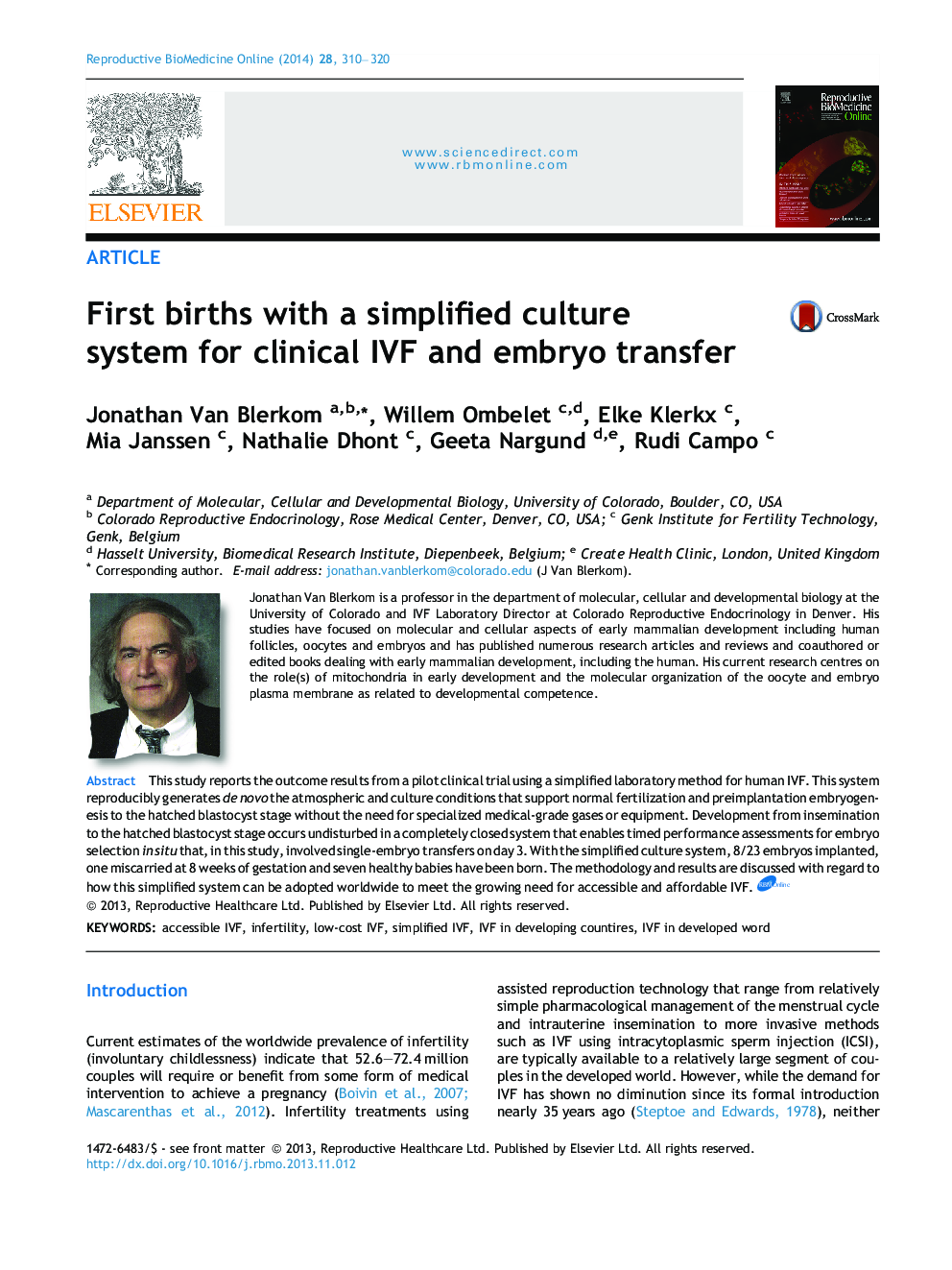| Article ID | Journal | Published Year | Pages | File Type |
|---|---|---|---|---|
| 6189067 | Reproductive BioMedicine Online | 2014 | 11 Pages |
This study reports the outcome results from a pilot clinical trial using a simplified laboratory method for human IVF. This system reproducibly generates de novo the atmospheric and culture conditions that support normal fertilization and preimplantation embryogenesis to the hatched blastocyst stage without the need for specialized medical-grade gases or equipment. Development from insemination to the hatched blastocyst stage occurs undisturbed in a completely closed system that enables timed performance assessments for embryo selection in situ that, in this study, involved single-embryo transfers on day 3. With the simplified culture system, 8/23 embryos implanted, one miscarried at 8Â weeks of gestation and seven healthy babies have been born. The methodology and results are discussed with regard to how this simplified system can be adopted worldwide to meet the growing need for accessible and affordable IVF.A common notion concerning the demographics of infertility is that it is largely a phenomenon associated with developed countries, where infertility treatments are commonplace. In fact, most infertile couples reside in developing/low-resource countries where infertility diagnosis and treatment is nonexistent, inaccessible or unaffordable by the vast majority of young men and women in need. The irony of this situation is that bilateral tubal occlusions, for which IVF was originally indicated and is the most effective treatment, is by far the most common cause of their infertility. We have addressed one aspect of this issue, the IVF laboratory, as part of a wider effort by the Walking Egg Project to design and establish small, dedicated centres in developing countries to provide assisted reproduction technologies that are affordable and accessible to a wider proportion of the population in need. The methods for conventional IVF designed to addresses tubal obstructions are relatively simple and free of complex instrumentation and the highly developed infrastructure common to high-resource centres. This simplified IVF system self-generates culture conditions in a closed system. After prolonged preclinical testing, a pilot clinical study was initiated in 2012 in Genk, Belgium. The findings suggest that a significant first step has been achieved in the effort to bring advanced assisted reproduction to developed countries using a low-resource but highly effective IVF system capable of bringing modern reproductive medicine to infertile couples in low-resource societies.
